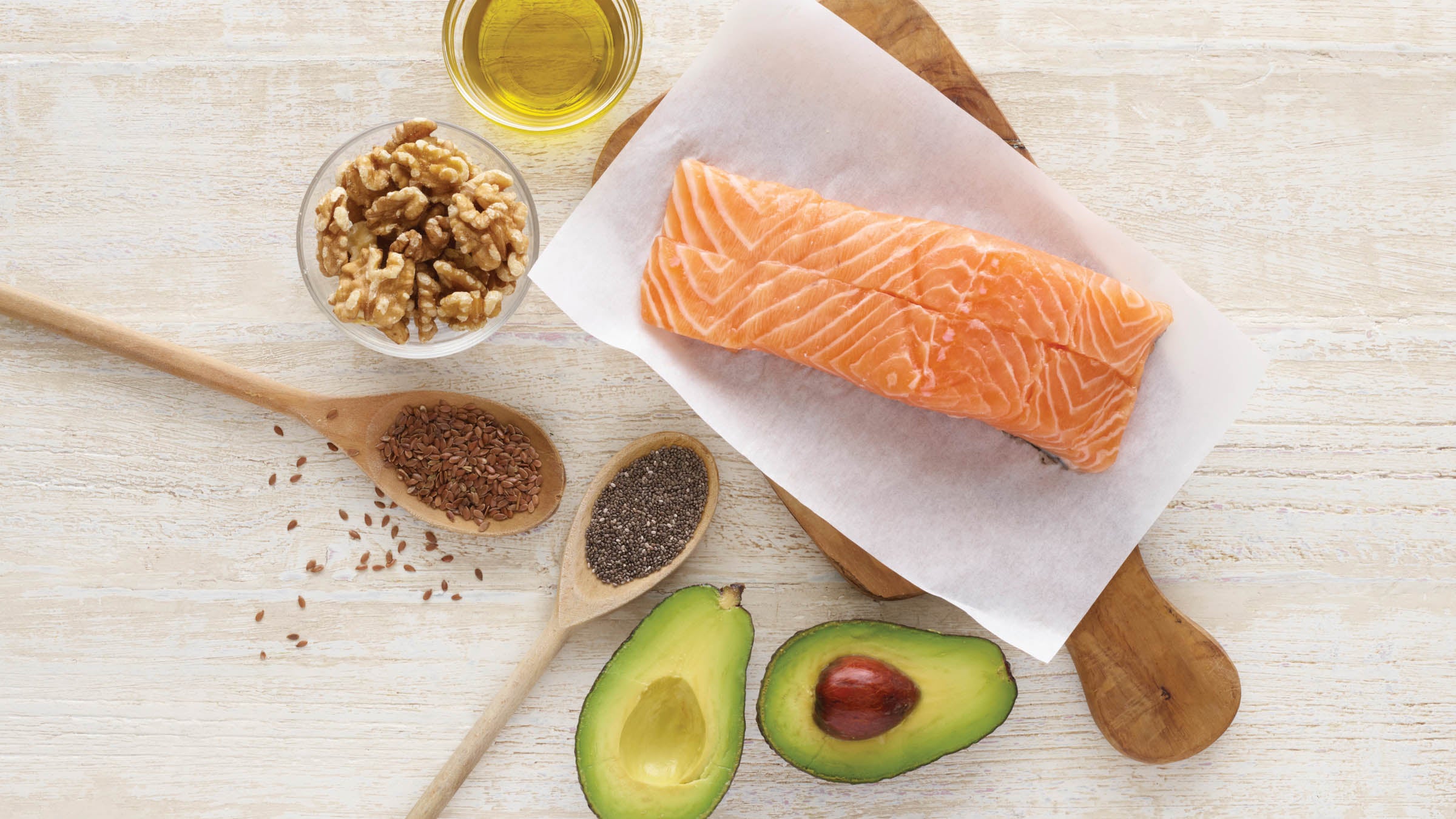The Benefits of Omega-3s for Athletes

(Photo: Getty Images)
Omega-3s are a powerhouse nutrient, and many studies have shown they can improve mood, boost cardiovascular health and protect vision, and may even protect against heart disease, diabetes, and attention deficit hyperactivity disorder and asthma in children. Conversely, an omega-3 deficiency has been associated with anxiety and depression. But what exactly are “omega-3s,” and just how helpful are they for athletes?
The A’s, D’s and E’s of Omega-3s
All omega-3s are fatty acids — the building blocks of fat — and the ones of most importance to people are alpha-linolenic acid (ALA), eicosapentaenoic acid (EPA) and docosahexaenoic acid (DHA). “DHA and EPA are individual fatty acids with a special structure, which makes them particularly useful, since their very long chain gives them fluidity,” explains Carrie Ruxton, Ph.D., U.K.-based dietitian at Ruxton Fitness. “Incorporating highly fluid fats into your brain cells makes communication between [the cells] more effective. ALA is a shorter-chain omega-3, and it is essential, meaning we can’t make it [in the body] and must consume it from dietary sources.”
Fortunately, coming by ALA is easy, and it is found in vegetable oils, chia seeds, walnuts and meat, and marine foods such as salmon, tuna, anchovies, mackerel and prawns are rich in DHA and EPA. “But DHA and EPA are typically under-consumed, since most people eat too little fish,” Ruxton says.
Athletic Applications
Omega-3s are of particular importance to athletes, especially if you’re training hard. “They are anti-inflammatory, and several studies have shown them to reduce delayed onset muscle soreness, shorten recovery time from high-intensity training and improve endurance capacity,” Ruxton says. In addition, a scientific review published in the journal Nutrients suggests that EPA and DHA help facilitate proper muscle function and neuromuscular adaption, and they can maintain muscle mass under conditions in which wasting is possible, such as during recovery from an injury.
Consuming EPA and DHA together is the best formula for efficacy because they work in a synergistic manner, and experts suggest that active women include 1 to 2 grams daily in a ratio of 2:1 of EPA:DHA to counteract exercise-induced inflammation and boost overall health. However, another study published in Frontiers in Physiology found that among non-elite runners, their blood levels of omega-3s decreased as their weekly running distance increased, so if you’re an endurance athlete, consider adjusting and customizing your intake.
Something’s Fishy…
Sure, all this sounds great, but the million-dollar question remains: What about the fish burps? Most omega-3 supplements are made with fish oil, which can repeat on you (a lot) if you’re sensitive. Some supplements have an enteric coating that can help eliminate the problem. However, those don’t work for everyone. If you’re one of the unlucky few, these tips can help with your oceanic issue:
- Split your daily dosage. For example, take one pill in the morning and one before bed.
- Choose only pharmaceutical-grade products.
- Take your capsules with a meal instead of on an empty stomach.
- Try an enzyme digestive supplement with lipase, which can help break down fats.
- Take your capsules with a small glass of orange juice to mask the flavor.
You also could go the plant-based route. “Plant sources such as flaxseeds, nuts and seeds contain ALA but no DHA and EPA,” Ruxton says. “ALA can be used by the body to make DHA and EPA, but the process is slow and inefficient.” However, microalgae oil is DHA-rich and is comparable to fish oil in terms of cardiovascular benefits, according to a study in Current Diabetes Review. Supplements aside, there are plenty of foods that contain omega-3s, and experts always advise getting your omegas from food rather than supplements whenever possible. Plan your meals to include these nutritional superstars and you’ll be on your way to hitting your personal best.
| Food | Milligrams of Omega-3s |
| Flaxseeds | 6,479/1 oz |
| Chia seeds | 5,064/1 oz |
| Farmed Atlantic Salmon | 4,252/6 oz |
| Wild Atlantic Salmon | 3,934/6 oz |
| Walnuts | 2,579/1 oz |
| Atlantic Mackerel | 2,225/6 oz |
| Firm Tofu | 1,467/1 cup |
| Oysters | 1,346/3 oz |
| Navy Beans | 322/1 cup |